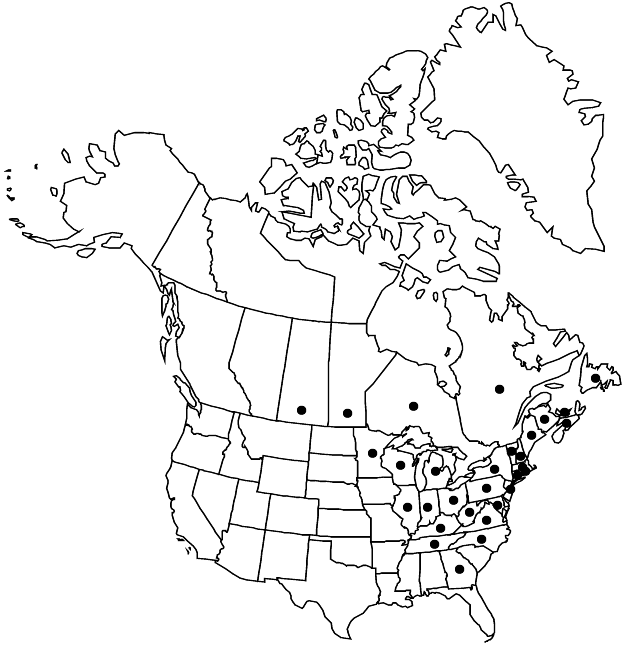Fallopia cilinodis
Folia Geobot. Phytotax. 6: 176. 1971.
Herbs, perennial, not rhizomatous, 1–5 m. Stems usually scandent or sprawling, rarely erect, freely branched, herbaceous, pilose-hispid or, rarely, subglabrous, not glaucous. Leaves: ocrea usually deciduous, light-brown, cylindric, 3–4 mm, margins oblique, base fringed with reflexed hairs and slender bristles, face glabrous or puberulent; petiole 1–6 cm, retrorsely pubescent; blade cordate-ovate, cordate-hastate, or cordate-sagittate, 2–6 (–12) × 2–5 (–10) cm, base cordate, margins wavy, often reddish-ciliate, apex acute to acuminate, abaxial face pilose-hispid, not minutely dotted, not glaucous, adaxial face glabrous. Inflorescences terminal and axillary, erect or spreading, paniclelike, 4–10 (–15) cm, axes reddish-pilose; peduncle 1–12 cm, retrorsely pubescent. Pedicels ascending or spreading, articulated near middle or distally, 3–4 mm, glabrous or puberulent. Flowers bisexual, 4–7 per ocreate fascicle; perianth nonaccrescent, greenish white to white, 1.5–2 mm including stipelike base, glabrous; tepals elliptic, apex obtuse to acute, outer 3 obscurely keeled; stamens 6–8; filaments flattened proximally, pubescent proximally; styles connate basally; stigmas capitate. Achenes included or exserted, brownish black to black, 3–4 × 1.8–2.4 mm, shiny, smooth; fruiting perianth glabrous, wings absent. 2n = 22.
Phenology: Flowering Jun–Oct.
Habitat: Dry woods, thickets, clearings
Elevation: 0-900 m
Distribution

Man., N.B., Nfld. and Labr. (Nfld.), N.S., Ont., P.E.I., Que., Sask., Conn., Ga., Ill., Ind., Ky., Maine, Md., Mass., Mich., Minn., N.H., N.J., N.Y., N.C., Ohio, Pa., R.I., Tenn., Vt., Va., W.Va., Wis.
Discussion
Á. Löve and D. Löve (1982) reported a chromosome count of 2n = 20 for Fallopia cilinodis. All other counts summarized by J. P. Bailey and C. A. Stace (1992) and counts by M. H. Kim et al. (2000) are 2n = 22. It is not known if the 2n = 20 count is an error.
Selected References
None.
Lower Taxa
"/2" is not declared as a valid unit of measurement for this property.